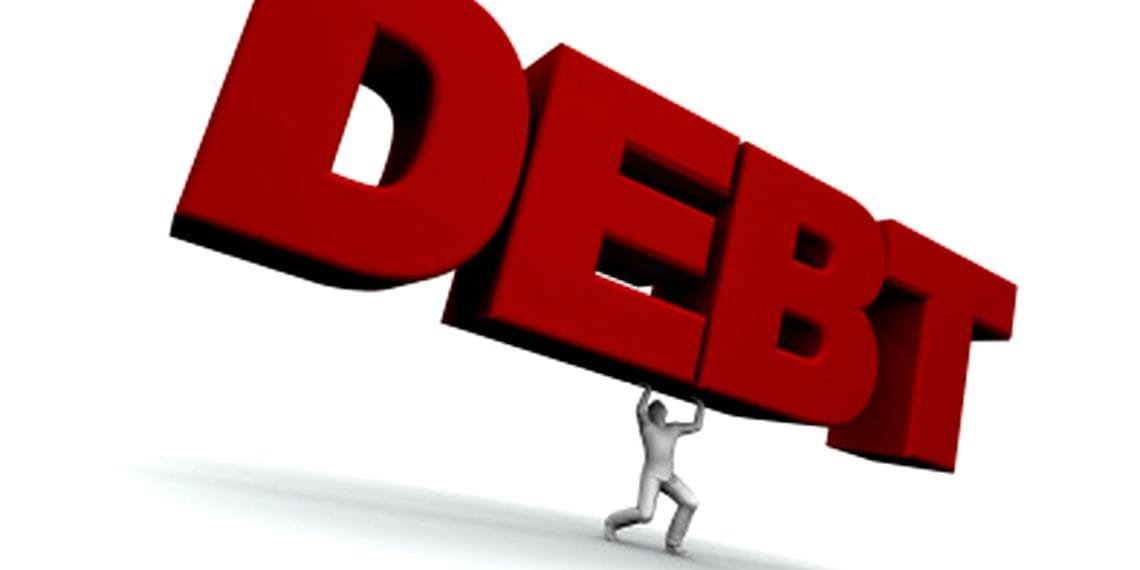The provisional nominal debt stock as of End-December 2020 stood at GH¢291,614 million, representing 76.1 percent of GDP. This is compared to the debt stock of GH¢217,991 million, equivalent to 62.4 percent of GDP in 2019.
A further breakdown of the total debt stock shows that the country’s external debt is GH¢141,780.60 million, representing 48.6 percent of total debt. Conversely, domestic debt amounted to GH¢149,833.89 million, accounting for 51.4 percent of the total public debt stock.
As a percentage of GDP, external and domestic debt represented 36.99 percent and 39.09 percent, respectively. Ghana’s debt stock has increased significantly over the past four years. Total public debt has gone up 169.6 billion between 2016 and 2020. This represents an increment of 139%.
Debt accumulation in the last four years
In 2016, the total public debt was GH¢122 billion, and that accounted for 56.9% of GDP. Several components were included in the debt stock and the debt/GDP ratio at the end of 2020. These include non-recurrent burdens that the government has to deal with as a matter of urgency.
The 2021 budget Statement shows that the government expended GH¢ 19.7 billion to combat the COVID-19 pandemic. Again, Financial Sector Clean-up cost the nation an amount of GH¢ 21 billion. Another notable expenditure that contributed to the rising stock of public debt is the Cost of Excess Capacity Charges paid to IPPs estimated at GH¢ 12 billion.
Nonetheless, with the exclusion of other expenditures, the total stock of debt for 2020 would have been GH¢ 238.9 billion. This implies a debt to GDP ratio of 58.7% if the drop in GDP growth in 2020 is attributed primarily to the COVID-19 pandemic.
Debt stock between 2004-2016
The 2021 Budget Statement also presented a breakdown of the country’s stock of public debt since 2004. Ghana’s debt stock increased by 30% between 2004 and 2008, and 269% between 2008 and 2012. Meanwhile, the country’s debt stock rose by 243% between 2012 and 2016. The stock of public debt then rose by 139% between 2016 and 2020.
Impact On GDP Growth
Provisional estimates from the Ghana Statistical Service show that the average overall real GDP for 2020 grew at 4.9 percent in Q1, -3.2 percent in Q2, and -1.1 percent in Q3. This brought the average GDP growth rate for the period to 0.2 percent. The lower growth of the country’s GPD was attributed mainly to the impact of the COVID-19 pandemic on the economy.
Meanwhile, the Finance Ministry indicated that the most recent work on GDP puts the 2020 projected GDP growth outlook at 0.9 percent.
Sectorial performance
In terms of sectoral performance, the Agriculture Sector showed some level of resilience to the COVID-19 pandemic. The sector grew at an average rate of 4.5 percent in the first three quarters of 2020. The performance is mostly credited to the government’s initiatives in the sector such as the Planting for Food and Jobs.
The Services Sector was the second best performing sector in the first three quarters of 2020 growing at an average of 1.9 percent. Conversely, the Industry Sector contracted by 3.1 percent over the period.
Overall, there was a reduction in growth from an average of 7% between 2017 and 2019 to 0.9% in 2020.
READ ALSO : Debt stock breaches sustainability levels; hit 74.4 %



















